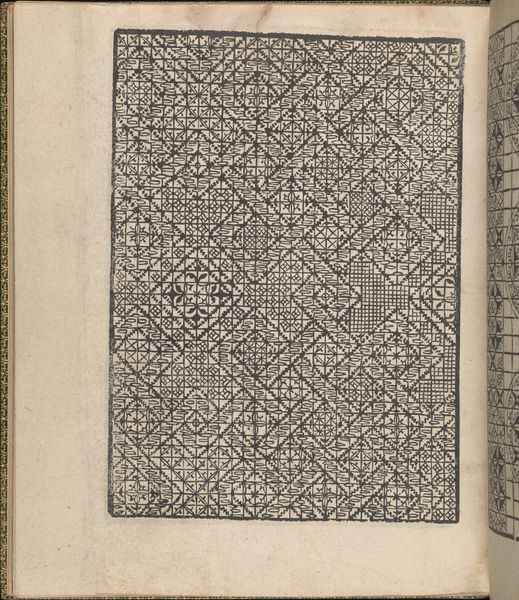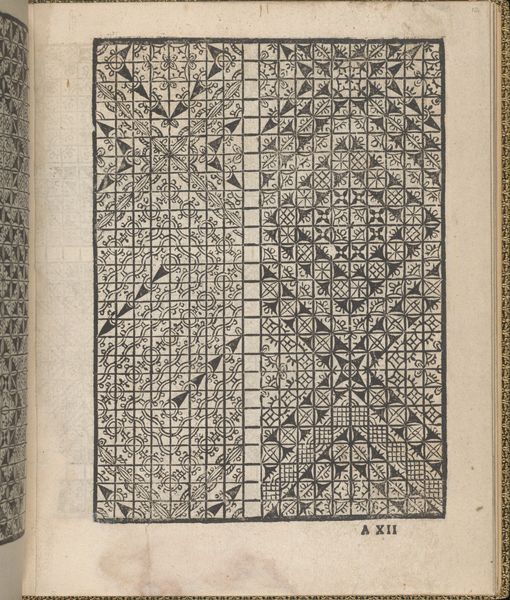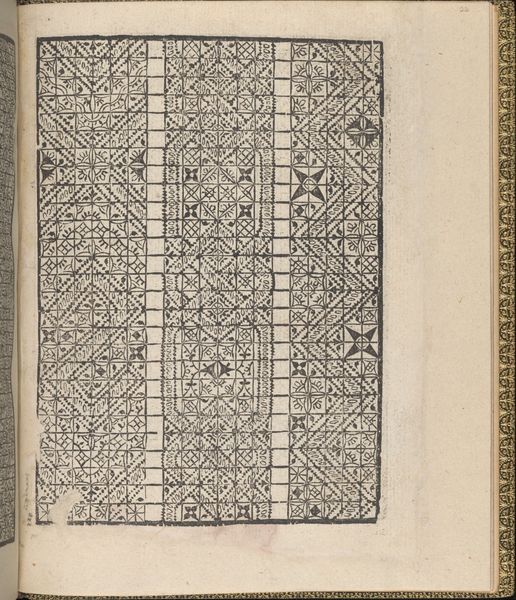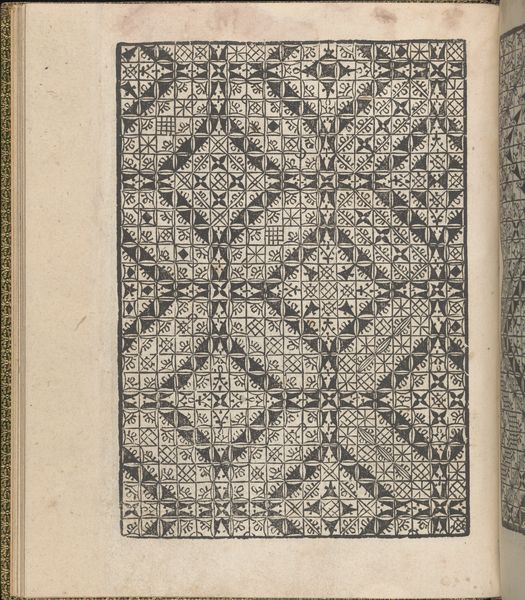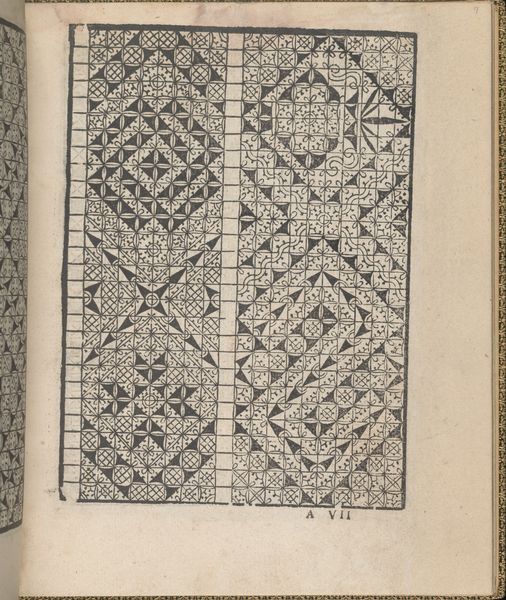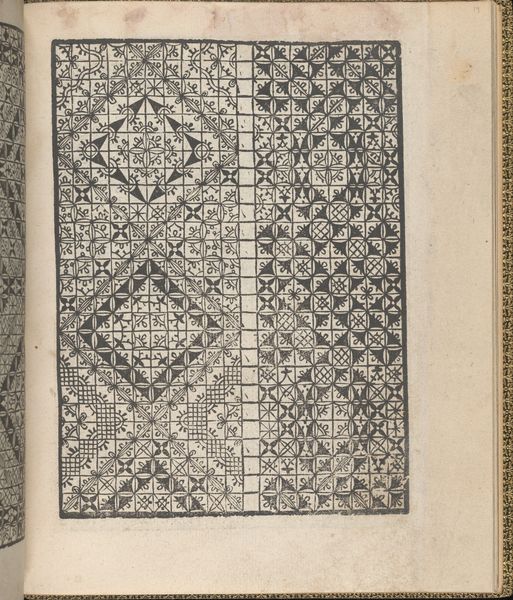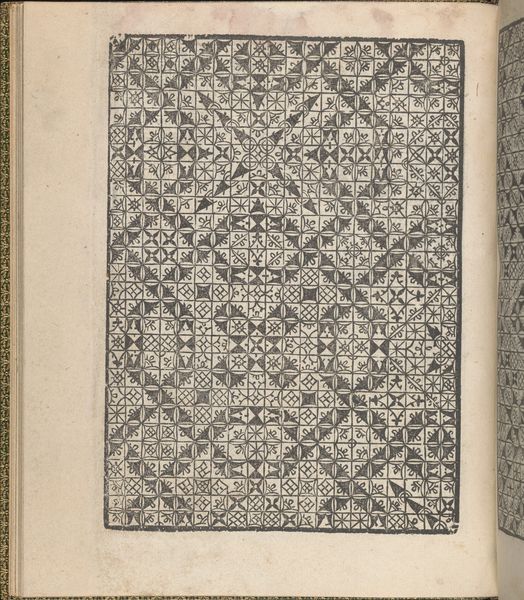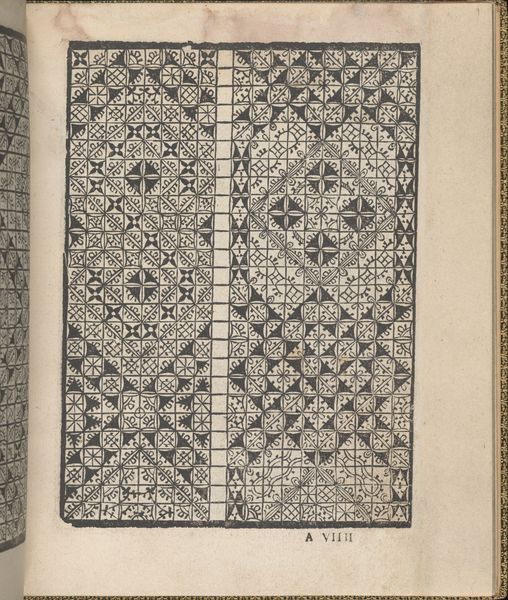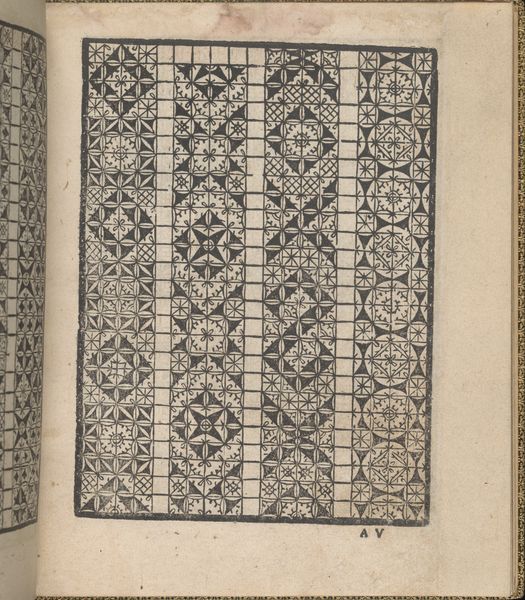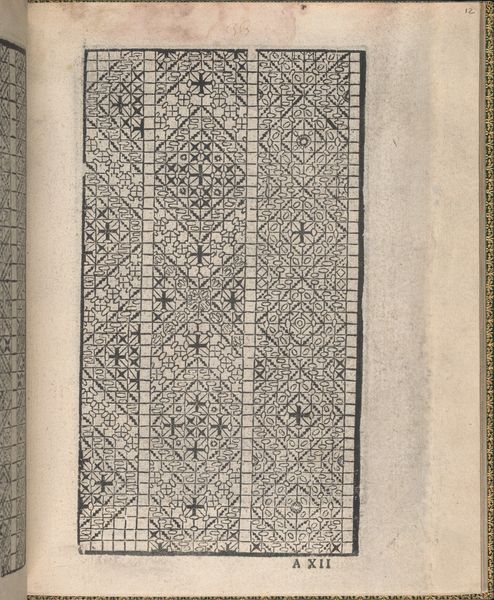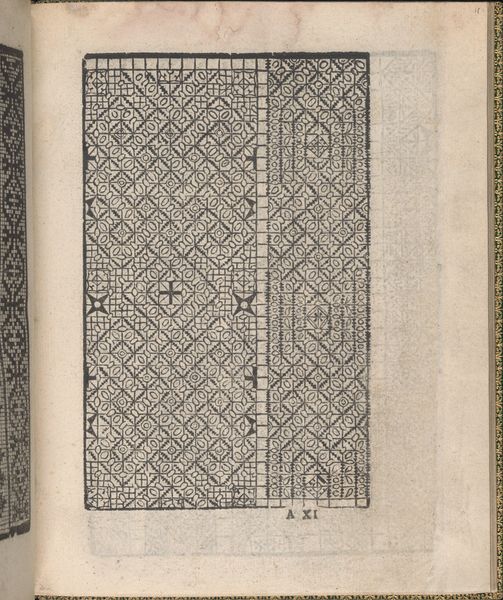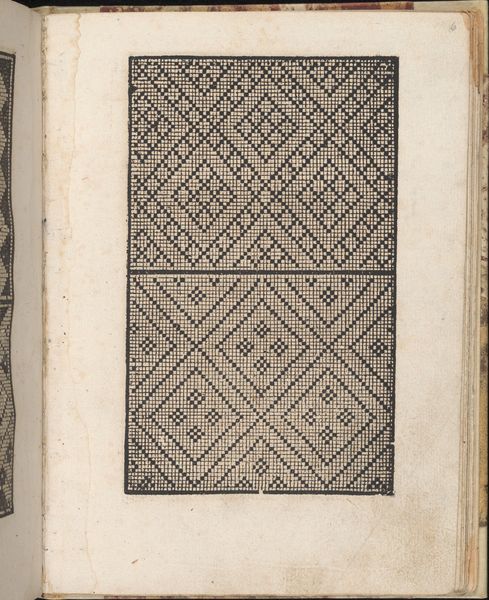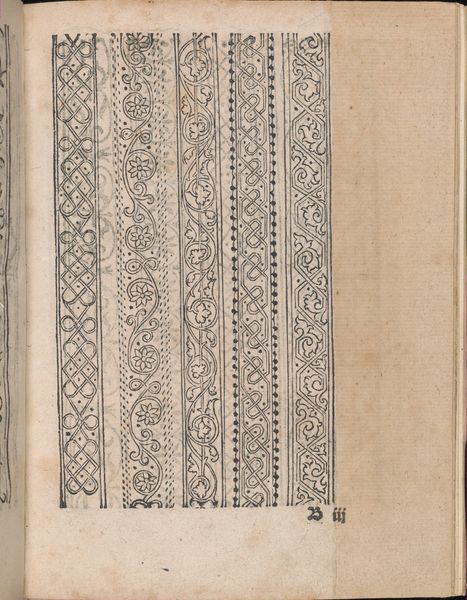
Giardineto novo di punti tagliati et gropposi per exercitio & ornamento delle donne (Venice 1554), page 11 (verso) 1554
0:00
0:00
drawing, graphic-art, print, etching
#
drawing
#
graphic-art
# print
#
etching
#
11_renaissance
#
geometric
#
decorative-art
Dimensions: 7-5/8 x 6-3/8 x 1/4 in. (19.4 x 16.2 x 0.6 cm)
Copyright: Public Domain
Editor: We’re looking at a page from "Giardineto novo di punti tagliati et gropposi per exercitio & ornamento delle donne," printed in Venice in 1554 by Matteo Pagano. It’s an etching depicting a grid filled with geometric patterns. What strikes me is its potential to be translated across different mediums—it feels very modular. How do you interpret this work? Curator: Exactly! It is significant to see this not just as a drawing but as a document of female artistry and labor. Manuals like this provided patterns for lacemaking and needlework, skills cultivated by women for both domestic purposes and as sources of income. Look at the title -- it clearly indicates the purpose: exercise and ornament for women. How does that inform your view of the piece? Editor: So, beyond its visual appeal, it’s tied to women’s roles and economic realities in the 16th century. Does the repetitive nature of the geometric patterns hint at the tedious nature of this work, or perhaps its meditative quality? Curator: I think it is both. Consider the social constraints placed on women during the Renaissance. These patterns provided an outlet for creativity, but also reinforced expectations. By mastering these skills, women could express individuality while remaining within the boundaries of their expected roles. There is something profoundly subversive, though, about transforming a domestic craft into a powerful form of expression. Editor: That gives me a lot to think about; it’s a beautiful example of how something seemingly simple can have such complex social implications. Curator: Agreed. Looking closely at historical works like this forces us to consider issues of gender, labor, and artistic expression across time. It certainly deepens our understanding and challenges simplistic narratives about art history.
Comments
No comments
Be the first to comment and join the conversation on the ultimate creative platform.
